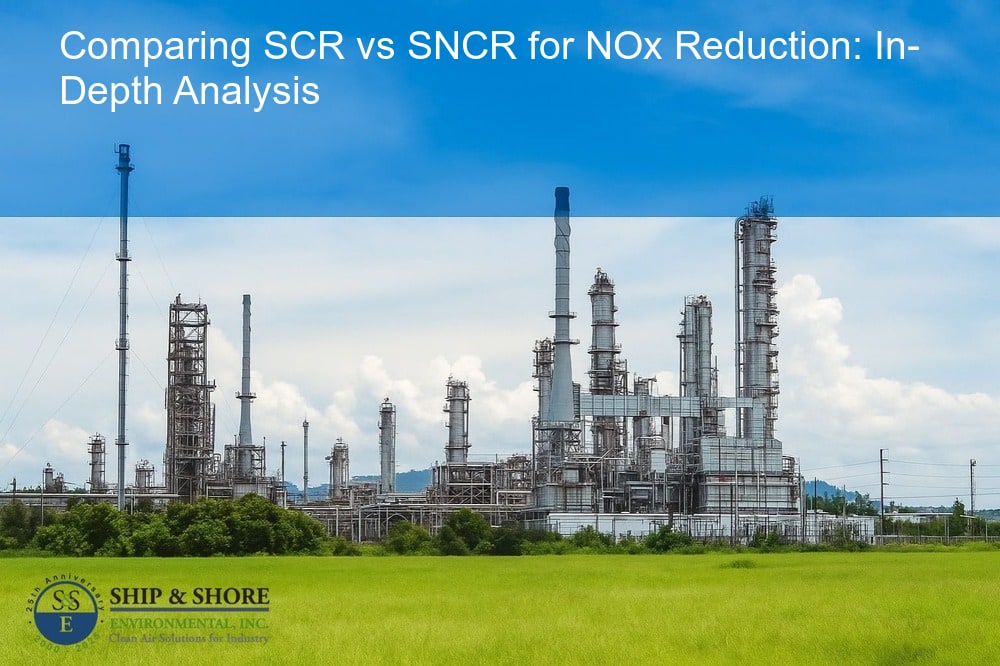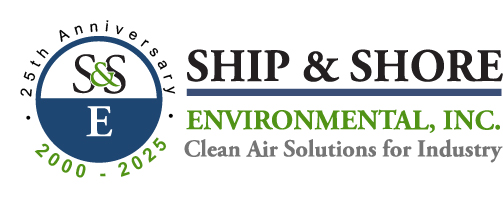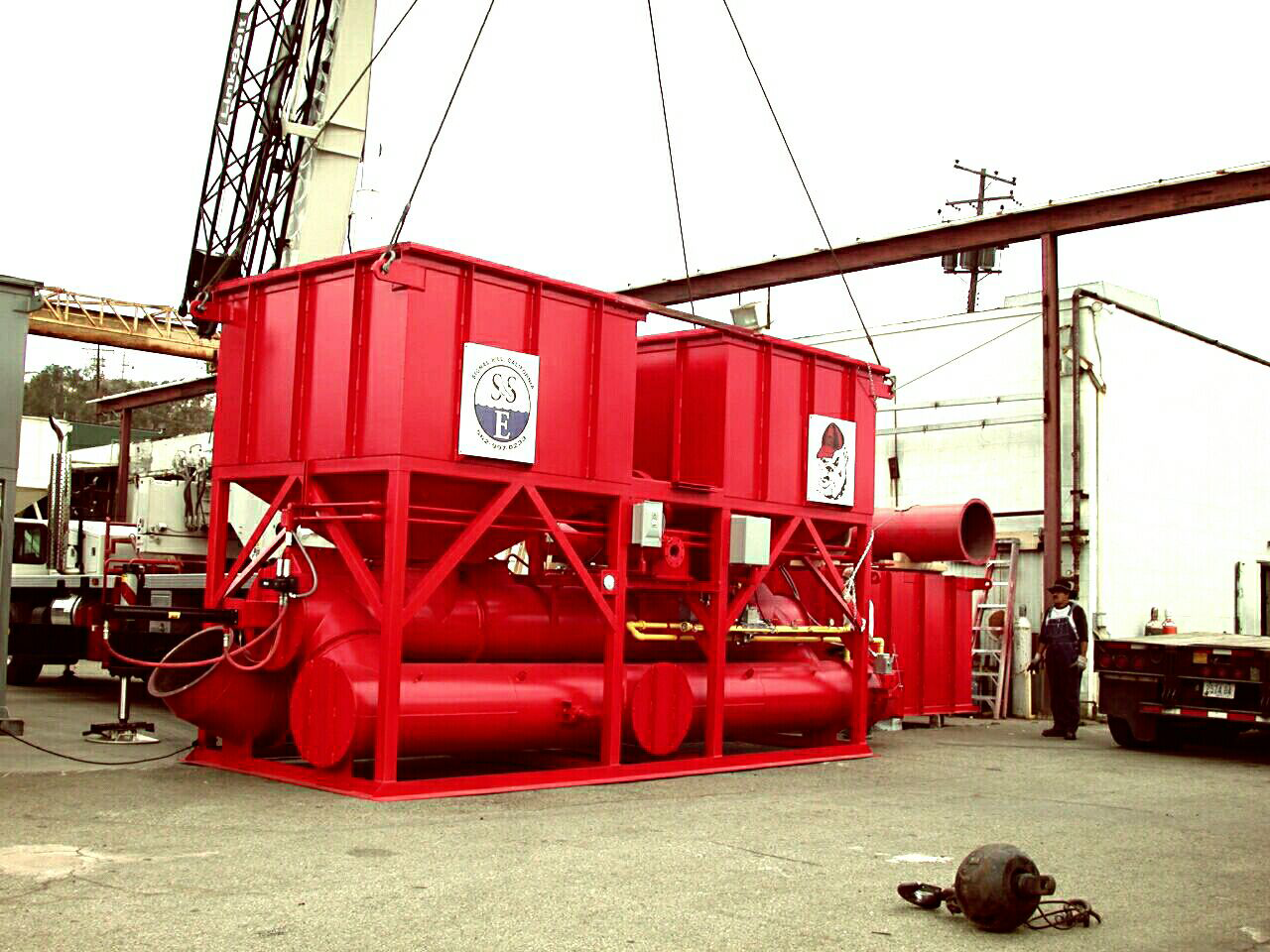
Comparing SCR vs SNCR for NOx Reduction: An In-Depth Guide
September 29, 2025 12:57 amUnderstanding NOx and its Environmental Impact
When it comes to industrial emissions, nitrogen oxides (NOx) stand out as a major environmental concern. NOx encompasses a range of nitrogen and oxygen compounds, among which nitrogen dioxide (NO2) and nitric oxide (NO) are the most prominent. These gases are primarily emitted from combustion processes, such as those in power plants, industrial boilers, and vehicles. High levels of NOx contribute to the formation of smog and acid rain, and pose significant health risks, including respiratory issues and heart disease. Recognizing the impact of NOx is the first step in Comparing SCR vs SNCR for NOx reduction in order to mitigate these negative effects.
The Need for NOx Reduction in Industries
Industrial sectors face increasing regulations aimed at reducing NOx emissions. These regulations are stringent because reducing NOx is critical to improving air quality, achieving compliance with environmental standards, and protecting public health. The necessity for effective NOx reduction solutions is paramount as industries look to balance operational efficiency with environmental responsibilities. As a result, it becomes crucial to explore the most viable technologies for NOx reduction, thereby enhancing the environmental performance of industrial operations.
Brief Overview: Comparing SCR vs SNCR for NOx Reduction
There are several technologies available for NOx reduction, but two of the most commonly implemented solutions are Selective Catalytic Reduction (SCR) and Selective Non-Catalytic Reduction (SNCR). Both methodologies offer distinct advantages and come with their own sets of challenges. Understanding how each system works and comparing SCR vs SNCR for NOx reduction can provide valuable insights into which technology may be best suited for a particular application.
Defining SCR (Selective Catalytic Reduction) and its Working Principles
Selective Catalytic Reduction (SCR) involves the injection of a reductant, typically ammonia or urea, into the flue gas stream. This mixture passes through a catalyst, which facilitates a chemical reaction that converts NOx into harmless nitrogen (N2) and water (H2O). The efficiency of SCR systems can exceed 90%, making them highly effective for significant NOx reduction. However, SCR systems are relatively complex, requiring careful management of operating conditions and catalyst maintenance to ensure optimal performance.
Exploring SNCR (Selective Non-Catalytic Reduction) and its Functionality
Selective Non-Catalytic Reduction (SNCR), on the other hand, also involves the injection of a reductant, but the chemical reaction takes place without a catalyst. The reaction occurs at high temperatures (typically between 1,600°F and 2,100°F) present in the combustion process. SNCR systems are generally simpler and less expensive to install compared to SCR systems. However, their NOx reduction efficiency ranges from 30% to 50%, which might be less adequate for some stringent regulatory requirements.
Defining SCR (Selective Catalytic Reduction) and its Working Principles
Selective Catalytic Reduction (SCR) is a highly effective technology for reducing nitrogen oxides (NOx) emissions from industrial processes. SCR employs a catalyst, typically composed of materials such as vanadium, tungsten, or titanium, to facilitate a chemical reaction between NOx and a reductant, usually ammonia or urea. The reaction results in the formation of harmless nitrogen (N2) and water vapor (H2O).
The SCR process works under optimal temperature conditions, typically between 550°F and 750°F (290°C to 400°C). Ammonia or urea is injected into the exhaust gas stream, mixing with NOx gases. The mixture then passes through a catalyst bed, where the reduction reaction occurs, converting NOx into benign compounds. The presence of the catalyst significantly speeds up the reaction rate, achieving up to 90% or greater NOx reduction efficiency. Transition words help connect the different steps involved, ensuring a clear understanding of the SCR process.
Exploring SNCR (Selective Non-Catalytic Reduction) and its Functionality
Selective Non-Catalytic Reduction (SNCR) is an alternative technology for NOx reduction that does not rely on a catalyst. Instead, the process involves injecting a reductant, such as ammonia or urea, directly into the combustion flue gases. The injection occurs at high temperatures, typically ranging from 1,600°F to 2,100°F (870°C to 1,150°C). This temperature window is crucial, as it ensures the proper decomposition of the reductant and facilitates the reduction of NOx to nitrogen and water.
Unlike SCR, SNCR is less complex and involves fewer components. However, its NOx reduction efficiency generally ranges from 30% to 60%, which is lower than that of SCR. Additionally, achieving the correct temperature window can be challenging, and the process may produce ammonia slip if not optimized properly. Despite its limitations, SNCR is often chosen for its lower initial capital cost and simpler installation requirements. Transition words are essential in highlighting the differences between these technologies.
In-Depth Comparison of SCR and SNCR for Industrial NOx Reduction
When comparing SCR vs SNCR for NOx reduction, we must consider several critical factors. SCR and SNCR differ significantly regarding their efficiency, cost, complexity, and operational requirements.
- Efficiency: SCR typically offers higher NOx reduction efficiency, often exceeding 90%, whereas SNCR’s efficiency ranges between 30% and 60%. This makes SCR preferable for applications where stringent NOx reduction targets need to be met.
- Cost: SCR systems generally have a higher initial capital cost due to the need for catalyst beds and more complex infrastructure. In contrast, SNCR systems require less initial investment, making them attractive for smaller operations or facilities with limited budgets.
- Complexity: SCR systems are more complex, involving the integration of catalyst beds, precise injection control systems, and additional monitoring equipment. SNCR systems are simpler and more straightforward to install and operate, which can result in lower long-term maintenance costs.
- Operational Requirements: SCR systems operate optimally within a narrower temperature range and require continuous monitoring to manage ammonia injection rates and prevent ammonia slip. SNCR systems, while less efficient, are more tolerant to temperature variations but still require careful control to avoid excessive ammonia slip or incomplete NOx reduction.
Choosing between SCR and SNCR often depends on the specific requirements of the industrial process and the regulatory environment. SCR’s higher efficiency makes it suitable for applications with strict emissions regulations, but it comes with higher costs and operational complexity. Conversely, SNCR, while less efficient, may be preferred for its simplicity and lower upfront costs. Transition words are crucial for linking these considerations, aiding in a comprehensive understanding of each technology.
Did you know? SCR systems can reduce NOx emissions by up to 90%, outperforming SNCR, which typically achieves 30-70% reduction.
Key Considerations when Choosing Between SCR and SNCR
When evaluating which technology to implement for NOx reduction, several key factors must be considered. Selective Catalytic Reduction (SCR) and Selective Non-Catalytic Reduction (SNCR) each offer specific advantages and challenges that can influence their suitability for different industrial applications.
SCR systems utilize a catalyst to enhance the NOx reduction process, achieving higher efficiency rates typically around 90% or more. This efficiency makes SCR an attractive option for industries required to meet stringent environmental regulations. However, the installation and operational costs of SCR systems can be significantly higher due to the need for catalysts and a more complex infrastructure.
In contrast, SNCR does not use a catalyst and is generally simpler and more cost-effective to install and operate. While it often achieves lower NOx reduction efficiencies, typically between 30% to 60%, the SNCR system can still be a viable solution for industries facing less stringent emissions regulations or those looking to complement other NOx control measures like low NOx burners.
The Future Outlook of NOx Reduction Technologies
As environmental regulations continue to evolve, the demand for effective NOx reduction technologies is expected to grow. Innovations in both SCR and SNCR technologies are likely to increase their efficiency and cost-effectiveness, making them more accessible for a broader range of industries.
Additionally, hybrid systems that combine aspects of both SCR and SNCR are being explored. These systems have the potential to offer the efficiency of SCR while maintaining the simplicity and lower costs associated with SNCR. Emerging technologies alongside traditional solutions like low NOx burners may provide industries greater flexibility in meeting future environmental standards.
Final Thoughts on Comparing SCR vs SNCR for NOx Reduction
In summary, the choice between SCR and SNCR for NOx reduction should be guided by a thorough understanding of specific industry needs, regulatory requirements, and budget constraints. SCR systems, with their higher efficiency, are well-suited for applications that demand significant NOx reductions. On the other hand, SNCR offers a more straightforward and cost-effective solution where moderate NOx control is sufficient.
Advancements in NOx reduction technologies and a potential shift towards combining multiple systems promise a dynamic future landscape. At Ship & Shore Environmental, Inc., we are dedicated to helping industries navigate these options to achieve environmental compliance and operational excellence. As we continue to innovate, comparing SCR vs SNCR for NOx reduction remains a critical aspect of our commitment to providing tailored solutions for our clients.
FAQ
What are the main factors to consider when selecting a NOx reduction technology?
When selecting a NOx reduction technology, consider the following factors: emission reduction requirements, installation and operating costs, space considerations, regulatory compliance, maintenance needs, and the potential for future environmental regulations. SCR systems offer high efficiency and are ideal for stringent standards, whereas SNCR systems are simpler and cost-effective for moderate reduction demands.
How does Selective Catalytic Reduction (SCR) achieve high NOx reduction efficiency?
SCR achieves high NOx reduction efficiency by using a catalyst to facilitate the chemical reaction between NOx and a reductant, commonly ammonia or urea. Consequently, this reaction converts NOx into nitrogen and water vapor, achieving reduction rates typically above 90%. Moreover, its performance precision is in line with stringent emission targets, making it a preferred solution for many industries.
Can SNCR be a suitable solution for industries with less strict NOx emission limits?
Absolutely, SNCR can be suitable for industries facing less strict NOx emission limits, as it offers a more straightforward and less expensive setup. Furthermore, it provides a moderate NOx reduction efficiency of 30% to 60%, which can be adequate for organizations that do not require the higher reduction rates achieved by SCR systems.
Are there hybrid systems that combine SCR and SNCR technologies?
Yes, hybrid systems that merge the attributes of both SCR and SNCR are being developed and investigated. These systems aim to leverage the high efficiency of SCR while benefiting from the simpler and cost-effective nature of SNCR. Therefore, they hold the potential to become a versatile option for companies seeking adaptable and efficient NOx reduction solutions.
What advancement can be expected in the field of NOx reduction technologies?
The NOx reduction technology landscape is anticipated to evolve with continuous advancements, leading to increased efficiency and reduced costs of existing technologies. As regulations become more stringent, innovation will likely drive the development of new solutions, including combined SCR and SNCR systems, to meet diverse industry needs. Consequently, our team at Ship & Shore Environmental, Inc. is actively working to stay at the forefront of these advancements, ensuring that we offer cutting-edge, efficient, and adaptable NOx reduction solutions to our clients.
Categorised in: Blog

